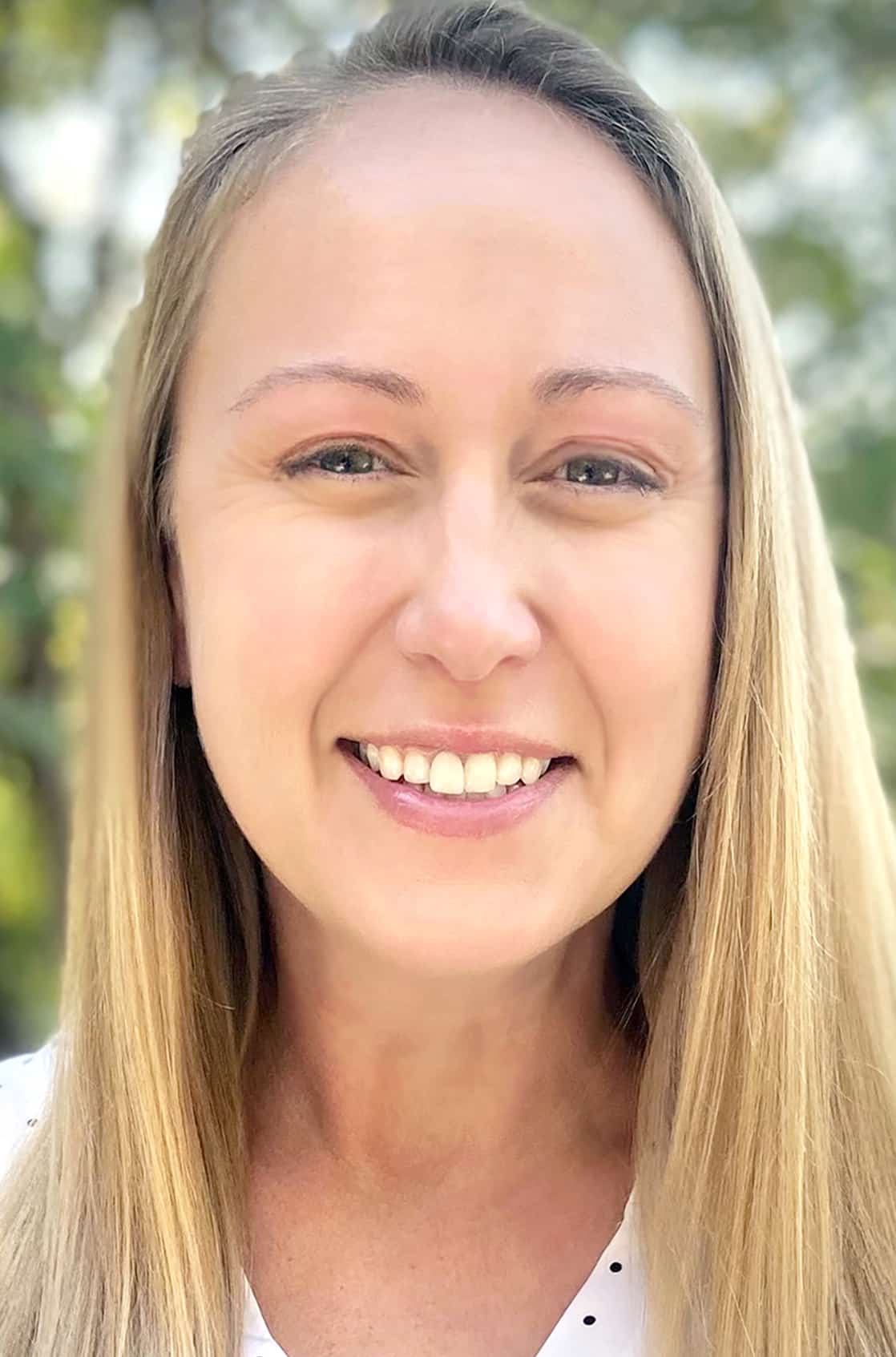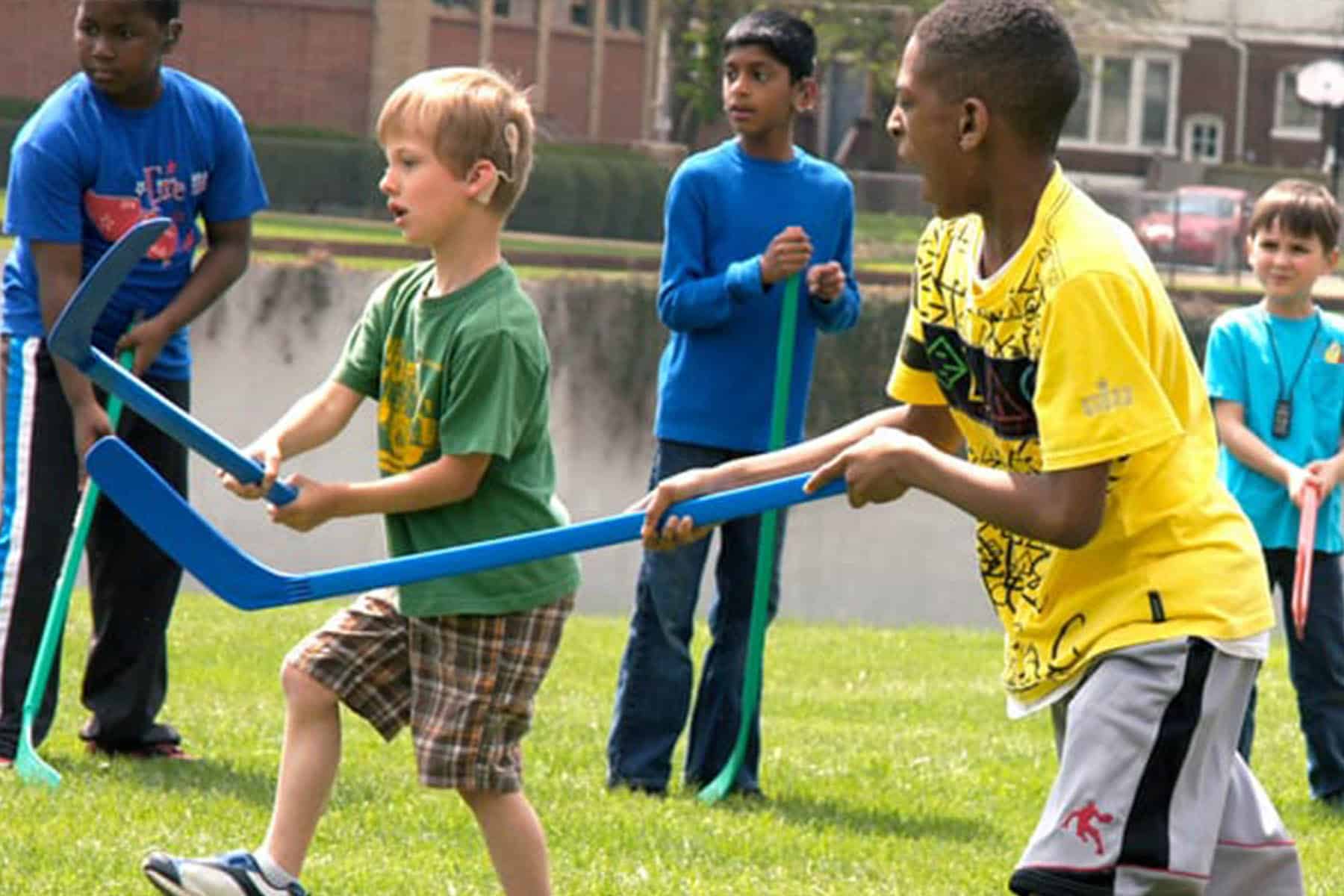Will his device break? Should I be worried about static electricity? The gym is so noisy. Will he be able to hear me?
These are common questions and concerns expressed by physical education (PE) teachers when a student with hearing loss joins their class. PE programs promote both physical and emotional well-being in all students, and while students with hearing loss can still actively participate in PE classes, adjustments to lessons may be necessary. Here are six considerations to keep in mind:
1. The student’s hearing loss and device(s) used: It is important to familiarize yourself with the student’s degree of hearing loss as well as what type of device(s) he uses. Recognize what sounds he has access to when he is aided as well as unaided. The Familiar Sounds Audiogram is a great way to understand this information. Be familiar with the device(s) he wears and the basics of troubleshooting (e.g., how to change a battery, how to insert an ear mold, how to attach a cochlear implant magnet, etc.).
Moisture can also cause issues with hearing devices. If the student becomes excessively sweaty, be aware that the device may need to be placed in a dri-aid kit to absorb excess moisture.
2.The noise level in the gymnasium and/or outside: Gymnasiums and the outdoors are naturally noisy environments, and it is important to be cognizant of this for all students, but especially for a student with hearing loss. It can be easy for a student who is deaf or hard of hearing to miss essential aspects of instruction. Here are some ways to minimize this:
- Use an FM system. FM systems reduce the effects of background noise and send the speaker’s voice directly to the student’s device(s).
- Look at the student when speaking and try to decrease your rate of speech.
- Repeat directions, and if necessary, pull the student aside to ensure he heard and understood the expectations.
3. The vocabulary being used: Students who are deaf and hard of hearing often need support and direct instruction when learning new words. When introducing a new game or sport, think of all the words/concepts that are possibly unfamiliar. For example, when teaching tennis, consider words like racquet, to serve, to swing and out of bounds. While vocabulary like this may also be new to other students, a student with hearing loss will require hearing these words multiple times and seeing the associated action/object to truly learn them.
4. The language being used: It is important to keep not only vocabulary in mind, but also the complexity of your language. Break directions into small, manageable chunks and use clear and specific language.
5. Safety: While students with hearing loss can participate in most physical activities, there are some safety concerns to keep in mind.
- Head injuries and bumps: If a student with a cochlear implant(s) should get hit with a ball, roughly bumped by a friend or take a fall and hit his head, the student’s parents, teachers and audiologist should be notified. To err on the side of caution, the student should also see the school nurse.
- Static: The static electricity produced by plastic slides and playground equipment, as well as the ever-popular parachute activities, can be damaging to a cochlear implant. While these activities don’t necessarily need to be entirely avoided, precautions can be made, such as spraying the equipment and the child’s clothing with Static Guard or having the student remove their external equipment.
- Device retention: While not necessarily a safety concern, PE teachers should be aware of the risk of a device falling off during activities. Retention clips that the child’s audiologist can provide are a great solution to this problem.
6. Communication: Regular communication with the student’s educational team and parents is essential. It is important to be aware of any changes in the student’s hearing loss and/or devices, and it is also important that you keep the team updated with any behavioral changes you observe in the student.
By keeping these considerations in mind, children with hearing loss can safely enjoy PE classes and experience the many benefits that PE offers.

Sunny Kemp has been a PE teacher at CID since 2005. She serves students ranging in age from 2-12 in all three departments in the CID School. Along with developing and implementing the PE program at CID, Ms. Kemp also coordinates the after-school childcare program.












